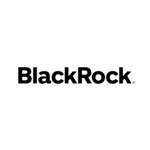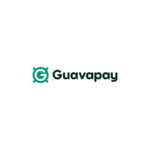Shedding light on shadow banking reporting
Selwyn Blair-Ford, head of global regulatory policy for Wolters Kluwer’s finance, risk and reporting business, takes a look at the new EU reporting requirements for managing exposure to shadow banking. There are plenty of challenges ahead, not least for the systems that will need to be updated to ensure that firms are able to adequately cope with the new guidelines.
It appears to be getting little attention, but, from 1st January 2017 banks in the European Union will be required to adhere to new internal reporting standards that will allow them to clearly and accurately identify exposure to shadow banking entities. Shadow banking exposures must have their own internal risk limits that will need to be monitored and adhered to. The shadow banking policies are to be included in the firm’s Internal Capital Adequacy Assessment and Capital Planning (ICAAP).
This requirement may be onerous for firms that do not have the ability to identify and monitor all shadow banking entities. And it is therefore advisable that shadow banking metrics are incorporated into institutions daily/weekly management reporting.
What is shadow banking?
Shadow banking system is defined by the Financial Stability Board (FSB) as “the system of credit intermediation that involves entities and activities outside the regular banking system”. This will include many firms operating in the financial sector that have no requirement to have a banking licence or participate in government sanctioned deposit insurance protection schemes.
Activities included as shadow banking are the provision of credit, businesses that result in maturity transformation (receiving short term funds while investing or lending longer term), non-banking participants in securities lending activities, securitisations, money market fund, financial trading that requires leverage and derivative trading. What distinguishes these activities are that they provide an economic service typically provided by banks, but the participants are not regulated as a bank.
Where did this new requirement come from?
The shadow banking sector provides many economic benefits and useful competition. It can often be the provider of credit and liquidity in situations where it would be difficult for banks to do so. However during the 2007/8 financial crisis the inability of regulators and others to measure the extent to which banks were exposed to shadow banking entities combined with insufficient information regarding shadows entities risk and exposures contributed to many of the adverse outcomes. The G-20 has tasked the FSB with strengthening the oversight and regulation of shadow banking. The FSB has chosen to address five key areas:
- Mitigation of the spill-over effect between regular banking system and the shadow banking system
- Reduction in the susceptibility of money market funds to runs
- Assess and align incentives associated with securitisation
- Dampen the financial stability risks and pro-cyclical incentives associated with securities financing transactions
- Assess and mitigate systemic risks posed by other shadow banking entities and activities.
Many of the financial reforms implemented play a role in addressing these key areas. The FSB has instigated a global monitoring programme where all FSB jurisdiction participate in a global information sharing exercise. It is this exercise that results in the FSB’s Global Shadow Banking Monitoring Report. Jurisdictions have also been required to monitor their regulatory perimeters enhancing oversight of funds, broker dealers, securitisation entities and others.
Related to the EBA reporting, the Basel Committee on Banking Supervision (BCBS) has implemented risk-sensitive capital requirements for banks investment in equity funds and a supervisory framework for measuring and controlling banks large exposures. IOSCO has introduced measures that will reduce the likelihood a run on money market funds which includes the imposition of breaks in activity and charges to customers in times of market stress.
In the area of securities financing a framework of haircuts on non-centrally cleared financing trades has been completed which is applicable to both banks and non-banks. These haircuts help to dampen some of the procyclicality and leverage risks inherent is securities financing activities. There has also been initiatives to standardise processes relating to financing data collection.
There are efforts to standardise regulatory approaches to re-hypothecation, limiting the risks relating to the overuse of collateral.
Measures to improve the transparency and aligning the incentives in securitisations have included requirements to be able to see through to the underlying asset pool, and the holding of significant amounts of the securitisation by the originators. There has also been the July 2015 BCBS/IOSCO paper on identifying simple transparent and comparable securitisations.
EBA guidelines
It is against the background of these and other regulatory initiatives that the EBA internal reporting requirements is set. The measure is clearly part of the effort mitigate the spill over effects between the regular banking system and shadow banking. One stated objective of this new guideline is for banks to set appropriate aggregated limits on exposures to shadow banking entities.
The guideline require banks set both effective processes and controls on shadow banking exposures and strong oversight by the management body of the institution.
The limits to be set by institutions should be relative to their eligible capital. Tighter individual limits may be set on individual shadow banking entities based on the specific business conditions of each shadow entity.
If firms are not able to adhere to these guidelines then they will need to limit their shadow banking exposure in a manner similar to the limits on large exposures.
So what does this mean for European banks?
EU banks will need to ensure that their existing processes are able to adequately cope with these new guidelines. There is a requirement that firms have a complete process to evaluate shadow banking separately from other banking business. This process will require a mixture of Regulation and Risk expertise in order to properly adhere to requirements.
Firms will need to have a robust methodology for identifying and managing counterparty information. This includes monitoring not only legal ties, but significant business ties where known. Information systems will need to be able to track shadow banking entities through the whole
Much of what is required may come from existing capital, leverage and liquidity regulatory monitoring processes, but each process will need to be adapted to separate out shadow banking specifically.
Internal reporting will need to be updated. This will include both standard periodic reporting and more intense analysis of developing issues. The reporting needs to be to identify potential risks as well evolving risks pertaining to shadow banking. This implies a stress testing methodology that is able to properly identify shadow banking sectors independently of other sectors. Further the result of the shadow banking stress test and periodic reporting need to be presented in a coherent manner.
Limits are to be expressed in terms of eligible regulatory capital, and the regulatory large exposure limits are to be used as a fall back. The use of these regulatory defined metrics indicates an expectation that they are already well integrated into firms risk and performance reporting. Further limits need to be set with care and recognising the increase risk shadow banking entities can pose to the banking sector.
These improvements should pave the way for a better understanding of the shadow banking counterparties. Increase recognition of commonalities may reveal both increase opportunities and potential operational savings.
This guideline provides the regulators with more information about both the intuition’sbusiness and the state of the shadow and banking sectors. As well as ICAAP submissions firms should expect ad-hoc information request on the topic.
Make sure your institution rises to the challenge.











































